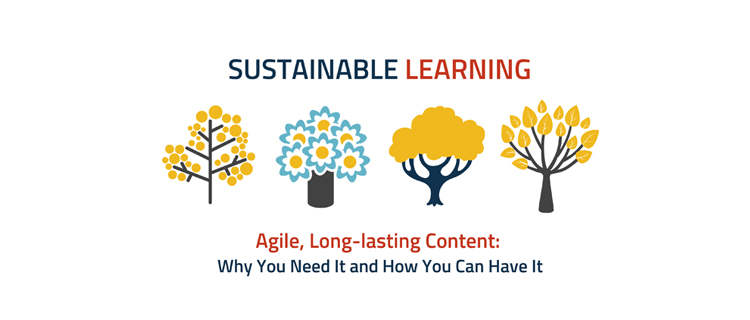The environment within which companies operate today, is subject to perpetual change. The current scenario is characterised by a plethora of tools, applications and processes; all of which call for customizable product, and sales strategies. As a direct result of this, the lifespan for relevance of workplace skills has reduced drastically over the past years. Dynamism has become the order of the day, as there is a need of absolute perpetuity in learning.
Due to the constant change taking place in almost every conceivable industry, organizations must now be capable of rapid adaptation within their respective business contexts. In order for companies to have agile workforces, it is imperative that they first introduce agility in a key foundational element; training. L&D practices must be re-structured in a way that makes training more intuitive, and hands-on.
It is also true however, that there is no feasible way for training to constantly be revamped in its entirety. What is required therefore, is a dynamically adjustable learning template, that can be tweaked in an efficient frame of time. In order to achieve this, there are two main steps that companies must take:
Learners–consumers of information– today have no dearth of available information, thanks to widespread technological advancements, and augmented web connectivity. The trove of knowledge however, is so vast in its diversity and volume, that consumers are most likely to be overwhelmed.
In order to effectively navigate this scenario, organizations need to establish effective systems that enable the creation of hyper-targeted, context-specific curated content. This can be achieved in either (or both) of two ways:
Content curation will also benefit training administrators in a big way, as it will enable them to hand-pick, assemble, and customize the most appropriate learning content for the workforce of their respective organizations.
There exists today; as mentioned earlier; an abundance of technologies (and various media that they put forth), augmented by online connectivity. These technologies hold with them, the potential to change trends, as well as the times that carry them on. Their applications are causing a shift from the age-old, hierarchically-sourced learning in companies, to a more democratic, and participative learning paradigm.
In order to keep up with the new paces of industry, organizations must tap into the offerings put forth by various technologies/platforms/media. The whole idea is to keep the user (learner) experience uniform in terms of media-based engagement. To clarify, consider the following example:
The whole point of effective training, is to avoid disengaging the attention of learners. In the current day scenario, this is only possible if training is administered across the platforms, and principles of new media; such as interactive videos, augmented/virtual reality training, bite-sized infographics, etc.
In conclusion, here are the broad reasons for why organizations must adopt dynamic training methods:
Today, the key to driving business performance does not simply lie in employees learning, but rather in their ability to learn. Employees need to be well trained, rather than being just well-informed. The constant changes in nature of industry trends and paradigms, calls for employee training that enables the workforce to effectively retain knowledge, and apply acquired skills, in dynamic situations.
Technology sets the precedent for the employee training scenario of today. Learning moves at the pace that is set by the rapidly evolving forms of media, and the corresponding technologies that deliver them. And so, in order to keep their position intact, organizations must quicken their pace by keeping in stride with the changing trends of media, and technology.
A large part of the current generation of workforce–and all of the new recruits–have, all/most of their lives, been surrounded by various media, and are adept to using the technology that drives those media. Their span of engagement therefore, rests on a highly dynamic scale; one that demands granular, flexible, and non-linear (basically non-traditional) learning.
DelphianLogic® is the Registered Trademark of DelphianLogic Technologies



